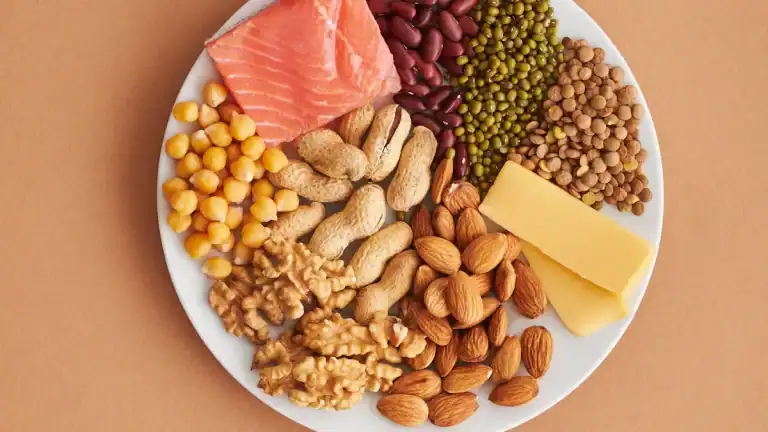
Cholesterol is a waxy, fat-like substance. Your body needs it to build cells and make hormones. You have “bad” LDL cholesterol and “good” HDL cholesterol. High LDL cholesterol levels increase your heart disease risk. Many people have high cholesterol. In 2008, 39% of adults globally had high total cholesterol. Between 2017 and 2020, 10% of adults in the United States had high cholesterol levels. Your diet greatly impacts your cholesterol. This post identifies common foods that may raise your cholesterol levels. You can make healthier food choices for your heart’s health.
Key Takeaways
Some foods can raise your bad cholesterol. These include processed meats, fried foods, and sugary desserts.
Saturated and trans fats are bad for your heart. Limit foods with these fats, like full-fat dairy and many baked goods.
Eating more plants, fiber, and healthy fats like omega-3s helps lower cholesterol. These foods protect your heart.
Exercise and keeping a healthy weight improve your cholesterol. They help your body manage fats better.
Talk to your doctor about your cholesterol. Regular check-ups and lifestyle changes keep your heart healthy.
Diet and Cholesterol Impact
How Food Affects Cholesterol
The food you eat directly influences your body’s cholesterol levels. Your body is smart. It has ways to manage the cholesterol you consume. When you eat cholesterol, your body limits how much it absorbs. Special transporters in your gut help push some cholesterol back out. This means less cholesterol reaches your bloodstream.
Your liver also plays a role. When you consume more cholesterol, your liver makes less of its own. This process helps keep your plasma cholesterol levels stable. However, these systems can become overwhelmed. Eating certain foods can still lead to high cholesterol. This happens when your body cannot keep up with the amount of unhealthy fats you consume.
Saturated vs. Trans Fats
Not all fats are equal when it comes to your cholesterol. Two types, saturated fat and trans fats, have a big impact. Both can raise your “bad” LDL cholesterol. However, trans fats are particularly harmful. They not only increase your LDL cholesterol but also decrease your “good” HDL cholesterol. This double negative effect makes trans fats very risky for your heart.
For example, studies show trans fats can reduce HDL cholesterol by 12%. They also increase total and LDL cholesterol by significant amounts. Saturated fats also raise total and LDL cholesterol. But they do not typically lower HDL cholesterol as much as trans fats do. These changes in cholesterol levels increase your risk of heart disease and stroke.
You should limit your intake of saturated fats. Aim for no more than 5% to 6% of your daily calories from saturated fat. For trans fats, the advice is simple: avoid them completely. Your body does not need trans fats, and they offer no health benefits. Many processed foods contain these high fats.
Calories per Day | Saturated Fat Limit (grams) |
|---|---|
1,200 | 7 to 8 |
1,400 | 8 to 9 |
1,600 | 9 to 10 |
1,800 | 10 to 11 |
2,000 | 11 to 13 |
2,200 | 12 to 15 |
Top 10 Foods That Raise Your Cholesterol Levels
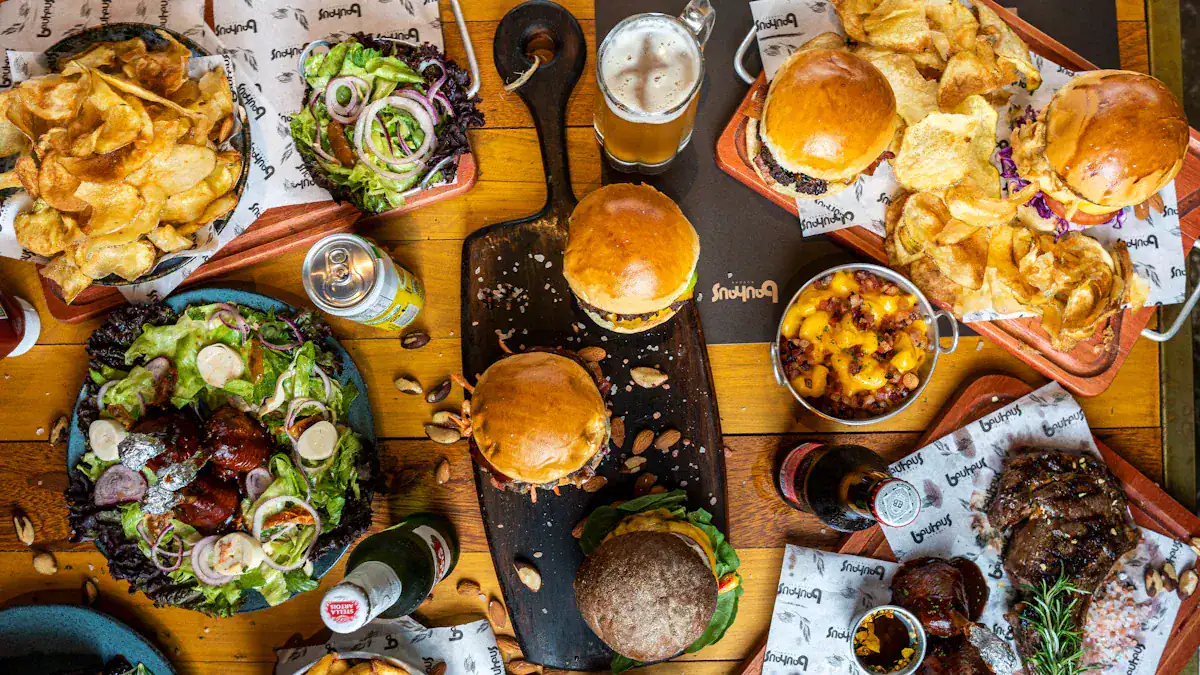
You want to understand which foods can impact your cholesterol. Many common foods may raise your cholesterol levels. Knowing these foods helps you make better choices. Here are 10 foods that can contribute to high cholesterol.
Processed Meats
Processed meats are often among the worst foods for your heart. They contain high levels of salt and nitrate preservatives. These compounds can negatively affect your heart health. Processed meats also contain saturated fat and dietary cholesterol.
For example, processed pork options like ham and sausage are not low-cholesterol meats. Other processed meats high in artery-clogging saturated fat include:
Bacon
Hot dogs
Salami
Pepperoni
Beef jerky
Corned beef
Other meats altered through curing, smoking, and salting
These foods can significantly raise your cholesterol. You should limit your intake of these high cholesterol foods. Choose fresh, unprocessed meats or plant-based proteins instead.
Red Meats
Red meats can also raise your cholesterol levels. They contain saturated fat. This fat increases your “bad” LDL cholesterol. An Oxford study linked unprocessed red meat intake to an increased risk of coronary heart disease. This is partly due to the high saturated fat content.
Red meat also contains carnitine. Your gut microbiota digests carnitine into trimethylamine (TMA). Your liver then changes TMA into trimethylamine N-oxide (TMAO). TMAO can inhibit cholesterol reversal and trigger artery inflammation. Elevated TMAO levels can last for weeks after you eat red meat.
A meta-analysis showed a small but significant increase in LDL-cholesterol when diets included more beef. This was compared to diets with low or no beef. A study in the American Journal of Clinical Nutrition found that high levels of red meat or white poultry had similar negative effects on blood cholesterol levels. They raised cholesterol more than plant proteins. This happened even if the diet did not have high saturated fat. This suggests the protein type itself plays a role.
You can choose leaner cuts of red meat. For example, a 3.5-ounce serving (about 100 grams) of lean beef has less than 4.5 grams of saturated fat. Extra-lean cuts have less than 2 grams.
Here is a look at the saturated fat in various red meat cuts:
Meat Cut (3oz serving) | Saturated Fat (grams) |
|---|---|
Lamb, leg, trimmed & baked | 2.0 |
Beef eye of round, trimmed | 2.4 |
Beef, top sirloin, trimmed | 2.4 |
Beef bottom round, trimmed | 2.5 |
Lamb, loin, lean & fat, trimmed | 3.0 |
Pork chops, lean only, broiled | 3.0 |
Beef eye of round, untrimmed | 4.0 |
Beef ribs, trimmed, roasted | 4.0 |
Pork chops, untrimmed, broiled | 4.0 |
Beef, top sirloin, untrimmed | 5.0 |
Corned beef | 5.0 |
Pork roast, untrimmed | 5.0 |
Beef bottom round, untrimmed | 6.0 |
Beef, ground lean, broiled | 6.0 |
Beef, ground extra lean, broiled | 6.0 |
Ham, baked | 6.0 |
Lamb, leg, untrimmed baked | 6.0 |
Lamb, loin, lean, trimmed | 9.0 |
Beef ribs, untrimmed, roasted | 10.0 |
Pork ribs, untrimmed | 10.0 |
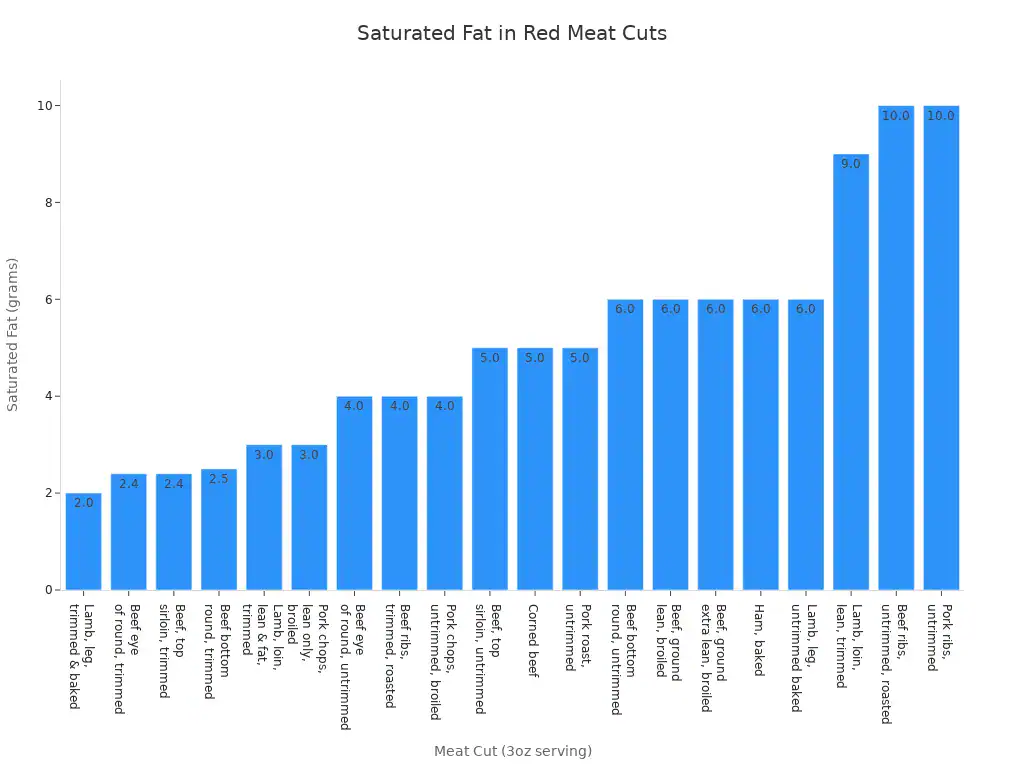
You can also choose poultry without skin or fish. These are healthier protein sources.
Full-Fat Dairy
Full-fat dairy products are high in saturated fat. This type of fat can raise your cholesterol levels. Examples of full-fat dairy include:
Butter
Cream
Whole milk
Cheese
Yogurt
A glass of whole milk contains 5 grams of saturated fatty acid. This is 20% of the daily recommended amount. These high cholesterol foods contribute to your overall saturated fat intake. You should choose low-fat or fat-free dairy options. You can also try plant-based milk alternatives.
Fried Foods
Fried foods are often among the worst foods for your cholesterol. They are typically cooked in oils that can form trans fatty acids (TFAs) during heating. Trans fats are very harmful. They raise your “bad” LDL cholesterol and lower your “good” HDL cholesterol.
Many edible oils can form TFAs when heated and fried. These include:
Sunflower oil
High oleic sunflower oil
Extra virgin olive oil
Rapeseed oil
Peanut oil
Corn oil
Soybean oil
Rice bran oil
Sesame oil
Linseed oil
Peony seed oil
Hydrogenated vegetable oil is also a significant source of trans fats. You should limit your consumption of fried foods. Opt for baking, grilling, or steaming your food instead.
Baked Goods
Many baked goods are high in unhealthy fats. They often contain ingredients that contribute to high cholesterol. These are some of the worst foods for your heart.
Lard and shortening have high proportions of saturated and trans fats.
Commercially produced items like cookies, brownies, squares, and cakes with puddings are high in saturated and trans fat.
Oils, shortening, and margarine are major sources of saturated and trans fats in baking.
Ultra-processed foods such as cakes, cookies, and crackers are also significant sources of these fats.
Baked goods like doughnuts, pastries, cupcakes, and biscuits are significant sources of trans fats. Commercial versions often use partially hydrogenated vegetable shortening. This is high in trans fat. You should choose homemade baked goods with healthier oils. You can also enjoy these treats in moderation.
Fast Food Meals
Fast food meals are often high in saturated fat and sodium. These factors can significantly raise your cholesterol levels. In 2013, a large fast-food meal (cheeseburger, French fries, and regular cola) contained high levels of sodium and saturated fat. These meals often exceeded daily recommendations. For example, a 4-ounce cheeseburger alone could meet or exceed half of your daily sodium target.
These high cholesterol foods are convenient but not healthy. You should limit your fast food intake. Prepare meals at home using fresh ingredients.
Highly Processed Snacks
Highly processed snacks are often packed with unhealthy fats and sugars. These are some of the worst foods for your cholesterol. They offer little nutritional value.
Chips
Cookies
Cakes
Crackers
Artificially flavored crackers
Potato chips
Low-fiber packaged cookies (mostly refined flour and sugar)
“Chickpea” chips (made with mostly rice or potato flour, high in added salt and oils)
Peanut butter candy
These high cholesterol foods contribute to weight gain and can negatively impact your cholesterol levels. You should choose whole food snacks. Examples include fruits, vegetables, and nuts.
Butter and Margarine
Butter is high in saturated fat. It contains 62% saturated fat. This can raise your cholesterol. Margarine has changed over time. Historically, early forms of margarine contained partially hydrogenated oils, which are trans fats. However, a 2020 FDA ban eliminated trans fats from the US food supply.
Today’s plant-based margarines often use healthy oils. These include canola, olive, or flaxseed oil. These oils are rich in beneficial monounsaturated and polyunsaturated fats. This results in significantly lower saturated fat content compared to dairy butter.
Product | Saturated Fat (%) | Monounsaturated Fat (%) | Polyunsaturated Fat (%) |
|---|---|---|---|
Butter | 62 | 29 | 4 |
Stick Margarine | 19 | 59 | 18 |
Tub Margarine | Lower than stick | – | Higher than stick |
You should choose soft, trans fat-free margarines or olive oil. These are better alternatives to butter.
Tropical Oils
Tropical oils are high in saturated fat. This makes them some of the worst foods for your cholesterol.
Coconut oil has a very high saturated fatty acid content, reaching 92% or approximately 85%.
Palm oil consists of about 50% saturated fatty acids.
These oils can significantly raise your cholesterol levels. You should use them sparingly. Opt for healthier oils like olive oil, canola oil, or avocado oil.
Sugary Desserts
Sugary desserts do not contain cholesterol directly. However, high sugar intake can indirectly raise your cholesterol levels. This makes them some of the worst foods for your overall heart health. High sugar intake increases triglycerides. It also decreases your “good” HDL cholesterol. Furthermore, it leads to dysfunctional changes in LDL molecules. This altered LDL can accelerate artery clogging. It also heightens the risk of thrombosis.
Sugar consumption is linked to increased markers for cardiovascular disease. Higher intake of added sugars correlates with lower levels of HDL. Individuals consuming more added sugars also show elevated triglyceride levels. Both low HDL and high triglycerides are risk factors for heart disease. A 2016 medical review indicates that increased sugar intake leads to higher LDL cholesterol and lower HDL cholesterol. This is especially true with refined fructose or sucrose.
You should limit sugary desserts. Choose fresh fruits or small portions of dark chocolate instead. These choices help manage your cholesterol.
Understanding High Cholesterol Foods
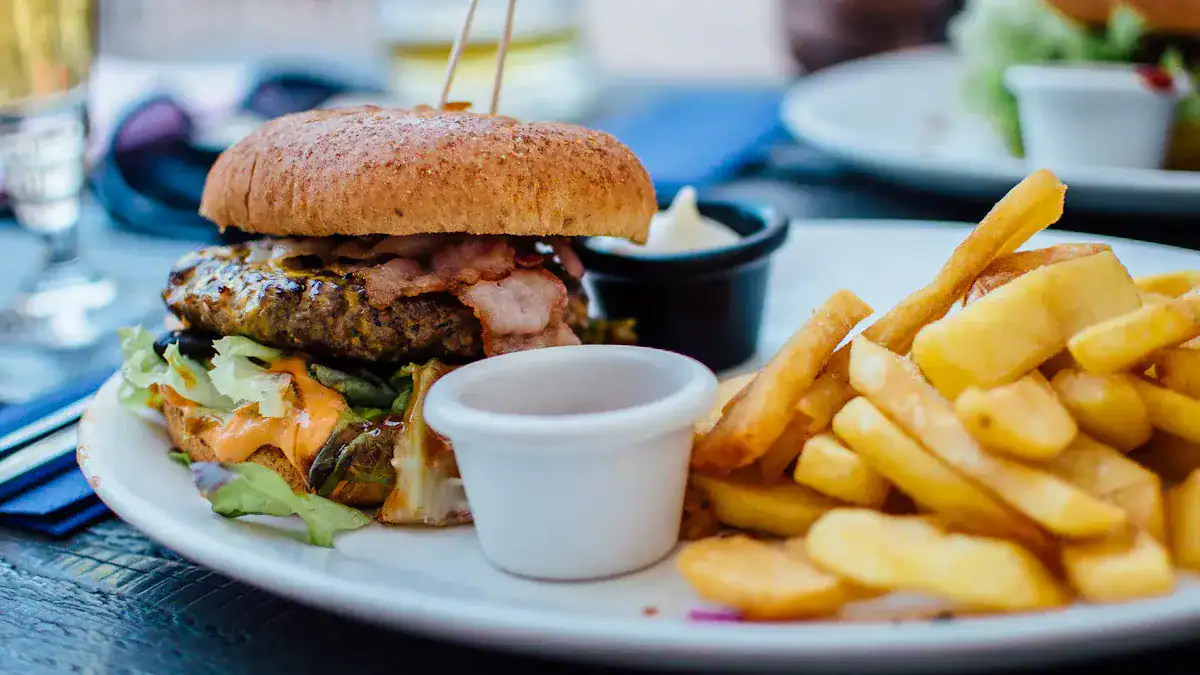
You might hear conflicting information about certain foods and their impact on your cholesterol. Let’s clear up some common misunderstandings about specific items.
Eggs and Cholesterol
Many people worry about eggs. They think eggs are high cholesterol foods. Eggs do contain dietary cholesterol. However, research shows a complex picture. A review of studies found egg consumption can increase your LDL-c/HDL-c ratio. It also raises LDL-c levels. This is especially true with longer eating periods. Eating three or more eggs might slightly increase HDL-c. But LDL-c still goes up more. This means the ratio worsens. The American Heart Association says dietary cholesterol is less of a concern now. This is due to new medicines and better diet understanding. Nutrition research now looks at overall eating patterns. It focuses less on single foods. Still, you should not make cholesterol-rich foods like eggs your main diet focus. The science on this topic is always changing.
Shellfish and Heart Health
Shellfish often get a bad reputation. People think they are high cholesterol foods. However, shellfish can be part of a healthy diet. They are low in fat and high in protein. Their effect on your blood cholesterol can vary. Some shellfish, like lobster, crab, and shrimp, might mildly raise cholesterol in healthy people. Others, like clams, oysters, and scallops, may have no effect. They might even help. Oysters and clams can inhibit cholesterol absorption. They also improve your HDL2-/HDL3-cholesterol ratio. Shellfish contain healthy unsaturated fats, including omega-3s. They have almost no trans fats. They also give you vitamins and minerals. This benefits your heart health.
Shellfish Type | Saturated Fat (3oz serving) | Cholesterol (3oz serving) |
|---|---|---|
Clams | 0g | 27mg |
Oysters | 5g | 27mg |
Blue Crab | 0g | 32mg |
Shrimp | 0g | 57mg |
Scallops | 0g | 22mg |
Shrimp has about 170 milligrams of this substance per serving. Squid has almost 400 milligrams. Most shellfish have less than 100 milligrams. You can enjoy shellfish in moderation. Pay attention to how you prepare them.
Organ Meats
Organ meats are indeed cholesterol-rich foods. They are also high cholesterol foods. They contain high amounts of cholesterol. For example, liver, kidney, and heart have a lot. Brains have extremely high levels.
Organ Meat | Cholesterol Content (per 100 grams) |
|---|---|
Heart, Liver, Kidney (range) | 130 – 800 milligrams |
Beef Brain (cooked) | 3100 micrograms |
Lamb Brain | 2040 micrograms |
You should eat these foods in moderation. They are nutrient-dense. But their high content means you should limit them.
Managing High Cholesterol
You can manage your cholesterol levels through various lifestyle changes. These actions go beyond just avoiding certain foods. They help you promote overall heart health.
Plant-Based Eating
Eating a plant-based diet can significantly lower your cholesterol. These diets reduce your intake of saturated and trans fats. They increase healthy unsaturated fatty acids. Plant-based foods are rich in dietary fiber, especially soluble fibers. These fibers form gels in your gut. These gels slow down or reduce the absorption of fats and cholesterol. Plant-based diets also contain phytosterols. These are like cholesterol and help lower it. You can aim for higher intakes of phytosterols, such as 2 grams per day, to lower LDL-C.
Dietary Component | Specific Recommendation | Magnitude of Effect on LDL-C Reduction |
|---|---|---|
Dietary fat | ||
Reduce saturated fatty acids (SAFA) | <10% of total energy intake (TE); <7% TE with hypercholesterolemia | 5–10% reduction |
Exchange SAFA with unsaturated fatty acids | Lower SAFA and increase mono- (MUFA) and polyunsaturated fatty acids (PUFA) | 5–10% reduction |
Avoid dietary trans fat | Reduce to <1% TE | 5–10% reduction |
Reduce dietary cholesterol | <300 mg/day | <5% reduction |
Dietary fiber (DF) | ||
Increase total DF intake | 25–40 g/day | 5–10% reduction |
Increase soluble fibers (e.g., beta-glucan) | ≥7–13 g/day as part of total DF intake | 5–10% reduction |
Phytosterols | ≥2 g/day | 5–10% reduction |
Increase Fiber Intake
Increasing your fiber intake is crucial for managing cholesterol. Both soluble and insoluble fibers help lower blood cholesterol.
Grapefruit pectin reduces atherosclerosis.
Dietary psyllium reduces blood cholesterol by decreasing LDL cholesterol synthesis.
A combination of oat bran and fish oil decreases blood cholesterol levels.
Barley and insoluble fibers show a hypocholesterolemic effect.
Soluble fibers from oats, psyllium, or pectin reduce total and LDL cholesterol. This effect is small but important. For example, 3 grams of soluble fiber from oats can decrease total and LDL cholesterol by less than 0.13 mmol/L. You should include high fiber foods in your diet.
Omega-3 Fatty Acids
Omega-3 fatty acids primarily lower your triglyceride levels. They do this by stopping the liver from making very-low-density lipoprotein (VLDL) cholesterol and triglycerides.
2 to 4 grams per day of omega-3 fatty acids effectively lower triglyceride levels.
Approximately 4 grams per day of omega-3 fatty acids reduce serum triglyceride concentrations by 25 to 30 percent.
Total cholesterol is not significantly affected by this amount. Effects on LDL and HDL cholesterol levels are variable.
The American Heart Association suggests taking 4 grams per day of prescription fish oil medication. This is a safe way to lower high triglycerides.
Regular Exercise
Regular exercise improves your cholesterol profile. Moderate-to-high-intensity exercise benefits blood lipid and lipoprotein levels. It improves the ratio of HDL to LDL cholesterol. Aerobic exercise might have a stronger impact on triglycerides and LDL cholesterol.
High-intensity aerobic activities (e.g., competitive sports, sprinting, HIIT) significantly boost HDL cholesterol and lower LDL levels.
Moderate-intensity rhythmic exercises (e.g., brisk walking, cycling, swimming) are recommended for excellent LDL-lowering and HDL benefits.
Lower-intensity exercises (e.g., leisure walking, stretching, light resistance training) contribute positively to physical activity goals.
A single exercise session needs about 1100 kcal of energy expenditure. This helps increase HDL cholesterol.
Healthy Weight
Maintaining a healthy weight significantly impacts your cholesterol levels. Losing weight can improve your lipid profile.
Intervention Type | LDL Cholesterol Change | HDL Cholesterol Change |
|---|---|---|
Alternate Day Fasting (ADF) | Decreased by 10 ± 4% | Not significantly affected |
Calorie Restriction (CR) | Decreased by 8 ± 4% | Not significantly affected |
Exercise | Not significantly affected | Increased by 16 ± 5% |
For men, exercise can increase HDL2 cholesterol and HDL2 mass. This is true across different initial HDL levels.
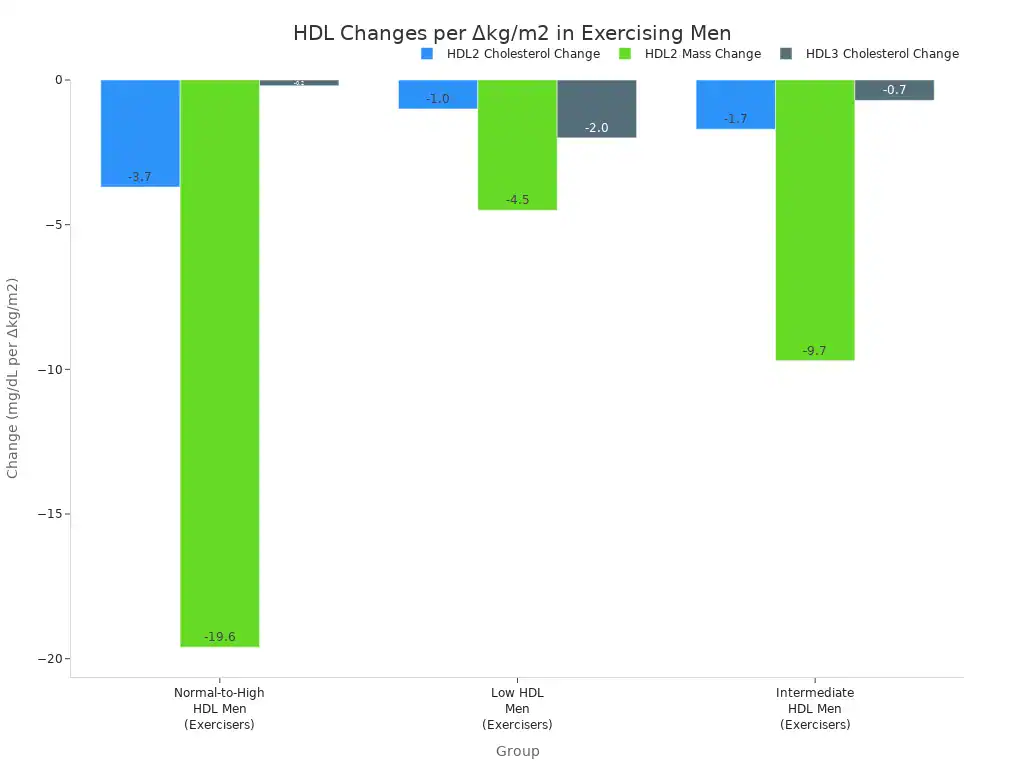
Lifestyle Choices
Your lifestyle choices affect your cholesterol. Light to moderate alcohol consumption is linked to higher HDL cholesterol levels. HDL cholesterol transports excess lipids away from arteries. This protects your vessel health. Heavy drinking, however, often leads to high cholesterol levels. Smoking lowers HDL levels. It also greatly increases your heart disease risk. Quitting smoking improves HDL-C levels. This includes total HDL and large HDL particle concentrations. This contributes to a reduced cardiovascular disease risk.
Medical Consultation
You should seek medical consultation for high cholesterol. All adults need counseling on a healthy diet and lifestyle. This reduces your heart disease risk. Your doctor should screen for cardiovascular disease risk. This includes a lipid profile and a risk calculation.
If you have an LDL-C of 190 mg/dL (4.9 mmol/L) or higher, you will likely receive higher doses of statins.
Adults over 75 years who are healthy may be candidates for drug therapy.
Doctors use cardiovascular risk calculators. These estimate your 10-year risk for heart attack or stroke.
Periodic cholesterol testing is recommended for all adults. This starts between ages 20-35 for men and 20-45 for women.
You need more frequent testing if you have a history of elevated cholesterol, diabetes, kidney problems, or heart disease.
Making informed food choices is vital for managing your cholesterol and promoting heart health. Be mindful of certain foods that can raise your cholesterol levels. These include:
Processed foods
Items high in saturated and trans fats
Sugary desserts
These foods often contribute to high cholesterol. Remember, moderation and balance are key, not complete elimination. Focus your diet on fruits, vegetables, whole grains, and lean proteins for better health. You can take control of your health through conscious eating habits and lifestyle changes to prevent your cholesterol levels from rising.
FAQ
What is the main difference between LDL and HDL?
LDL carries fats to your arteries. It can build up and cause blockages. HDL removes excess fats from your arteries. It brings them back to your liver for removal. You want lower LDL and higher HDL levels.
What role do saturated fats play in raising your levels?
Saturated fats increase your body’s production of LDL. This “bad” fat can accumulate in your arteries. Limiting saturated fat intake helps keep your LDL levels healthy. You find these fats in many animal products and some processed foods.
What are some common signs of high cholesterol?
High cholesterol usually has no symptoms. You often do not know you have it without a blood test. Sometimes, it can lead to serious conditions like heart disease. You might experience chest pain or a heart attack if arteries become blocked.
What are phytosterols and how do they help manage it?
Phytosterols are plant compounds. They are similar in structure to cholesterol. When you eat them, they compete with cholesterol for absorption in your gut. This competition reduces the amount of dietary cholesterol your body absorbs. You find them in nuts, seeds, and vegetable oils.




